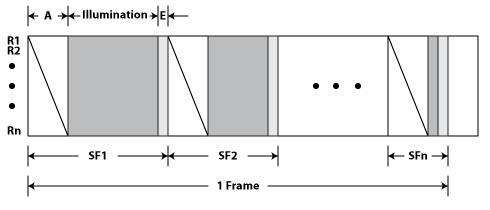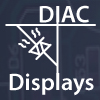Subfield Driving Method
Subfield driving is a method for producing full-color high-quality images on a binary display. DIAC displays are binary. Each cell has two states; ON and OFF. In the early days of plasma display technology, an image was divided up over several frames with varied discharge counts for each sub-frame. This technology was modernized in the 1990's by Japanese inventors Sano and Shinoda. Thus today, each video frame is divided into brightness weighted subfields.
Subfield Driving Method

Each frame is divided into 8-12 brightness weighted subfields. Image data is processed into which pixels are to be turned ON in each subfield. Each subfield has an address period, an illumination period and erase period. Each row is selected during the address period and data is applied to set pixels into the ON state. The illumination period applies driving pulses to create bursts of light to create the required brightness for each subfield. The number of driving pulses determines the brightness. In the erase period, an erase pulse resets the ON cells to the OFF state. The image is rendered cumulatively; over the course of the frame, .
DIAC displays take full advantage of this historical method. In fact, a DIAC display can utilize most of a plasma TVs driving logic. Both technologies utilize the same data path and waveform structure.
